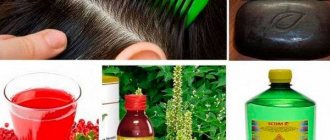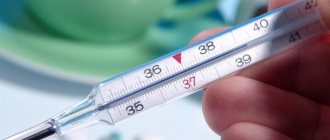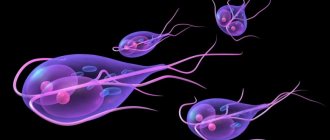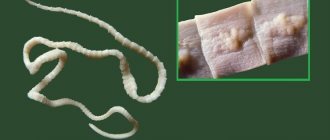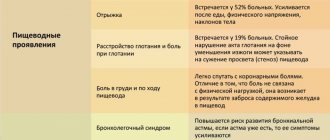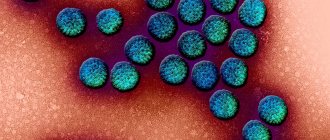- Gallery
- Reviews
- Articles
- Licenses
- Vacancies
- Insurance partners
- Partners
- Controlling organizations
- Schedule for receiving citizens for personal requests
- Online consultation with a doctor
- Documentation
The most dangerous time for helminth infection is summer and autumn. An abundance of fresh vegetables and fruits, constant exposure to the street, relaxation near bodies of water. It would seem that all of the above is very good for health. But only if you follow the rules of personal hygiene.
You can pick up helminths everywhere: in the sandbox, in the garden, on the beach, in kindergarten and in your own hallway, where we bring their eggs on the soles of our shoes. Some children's habit of putting their fingers in their mouth and biting their nails also increases the risk of infection.
Almost all worms are transmitted from person to person through dirty hands. Young children are especially susceptible to such infections. This is facilitated by episodes of weakening of the immune defense of the mucous membranes of the gastrointestinal tract, during the period of viral diseases caused by viruses of the herpetic group (cytomegalovirus, herpes simplex virus types 1 and 2, Epstein-Barr virus), as well as excessive prescription of immunosuppressive drugs.
Infection can occur in utero, as well as through domestic animals, through low-quality food products (meat, fish, milk, vegetables, etc.).
The most common and studied diseases are ascariasis, enterobiasis, toxocariasis, opisthorchiasis and giardiasis.
In recent years, due to the development of international tourism, cases of importation of helminths from southern and Asian countries have become more frequent, many of them remain unstudied.
Ways of infection with worms
The children's body is quite easily affected by parasites, since children have lower immunity. In addition, a child’s body cannot produce a special digestive enzyme that can destroy worm larvae; a person acquires this ability with age. Therefore, the threat of infection of the baby always exists, the reasons may be:
- hands not washed in a timely manner,
- food contaminated with worm eggs,
- contact with pets.
It is impossible to notice worm eggs visually; their size is microscopic, but they are present almost everywhere. The danger of infection arises during the period when the child begins to understand the world by feeling various objects. In addition, the baby strives not only to touch objects, but sometimes to taste them. Sandboxes in courtyards, which are often used by street animals as a toilet, pose a great danger. If we take into account the weak natural defense of the baby’s body against helminthic infestations, then it is not difficult to realize how high the chances of parasites affecting the child’s intestines are. Here are the main ways worms enter a child’s body:
- through unwashed hands;
- after contact with animals;
- through poorly cooked meat and fish;
- insects are also often a source of helminthic infestation, as they carry worm eggs on their legs;
- unwashed vegetables and fruits;
- through dirty water that is accidentally swallowed while swimming in an open body of water.
An important factor is the ability of worms to be a source of re-infection of the child, despite all the efforts of the parents. The fact is that helminths periodically crawl through the child’s anus, laying eggs in close proximity to it, which causes severe itching in the baby. The child itches, and small worm eggs, in turn, end up under his nails, from where they easily enter the mouth, and then travel down the gastrointestinal tract, ending up again in the intestines. After two weeks, the larvae grow into adults, which are also capable of laying eggs.
Treatment of helminthiasis
To achieve success in treatment, you need to choose the drug that will really help against the detected type of parasites. The fact is that drugs of this type do not always have a wide range of applications. Therefore, anti-worm medications for children are selected individually. Medicines approved by WHO for use in children:
- Pirantel
- Mebendazole
- Albendazole
- Levamisole
Drugs for the treatment of helminthiasis will not have any side effects on the body if you follow the correct dosage. Only a parasitologist can determine the dosage required for a child. Sometimes its purposes differ from the information specified in the instructions.
Prevention of worm infection
It is quite possible to prevent a baby from becoming infected with worms, but this will require considerable effort, in particular, the following will give a good effect:
- frequent wet cleaning of the house using disinfectants,
- systematic washing of toys and household items with which children have direct contact,
- systematic replacement of bed linen, washing it thoroughly and mandatory ironing on both sides.
Parents should not forget that the greatest danger for a child is infection with worms in infancy. Therefore, maintaining perfect cleanliness of strollers, playpens and cribs is simply necessary.
Compliance with hygiene rules by people caring for a child is mandatory! It is undesirable for a child to have direct contact with pets, for him to crawl near the front door, or to touch the shoes he wears on the street. As the child grows up, the rules of hygiene should be taught; even basic hand washing after visiting the toilet or walking outside will significantly reduce the risk of helminth infection.
How to determine the presence of helminthiasis
Signs of helminth damage to a child’s body:
- Presence of skin rashes
- Irritability
- Stool disorders
- Stomach ache
- Dizziness
- Nervous breakdowns and hysterics
- Nausea
- Bad dream
- Enlarged lymph nodes
- Frequent itching in the anal ring area
- Low-grade fever
- Rhinitis
- Cough
- Decreased immunity
If a child experiences a similar condition, it is necessary to undergo an examination.
Worm infestation in children, symptoms
There are about 300 types of parasites that can infect the human body, however, pinworms and roundworms are more often diagnosed in children. Both types of worms affect the small intestines; the symptoms of damage to both types of parasites are quite similar:
- Loss of appetite, pale facial skin, dark circles under the eyes.
- Restless sleep; sometimes the child may grind his teeth in his sleep.
- Headaches, dizziness, lethargy and weakness appear.
- Sometimes worms are present in a child’s feces and can be seen with the naked eye.
- The baby experiences itching in the genital area and anus.
- There is a disorder in the digestive system, constipation can be replaced by diarrhea, abdominal pain and nausea are observed.
- General blood count indicators may change, namely a decrease in hemoglobin and an increase in the level of eosinophils and ESR.
- The vital activity of worms becomes the cause of general poisoning of the body, manifested in the appearance of allergic reactions, urticaria, and atopic dermatitis.
- Increased body temperature for no good reason.
- Constant itching can cause inflammation in the genital mucosa.
- Worms not only poison the child’s body with the products of their vital activity, but also actively consume vitamins and minerals, nutrients that the child’s body needs so much, which often leads to vitamin deficiency and a decrease in the level of hemoglobin in the blood.
Symptoms
There are a lot of symptoms, and individual manifestations depend on which helminth eggs have entered the body. Next, we will talk about the general symptoms for all parasitic infections, and then about enterobiasis, ascariasis and 5 other types of infections.
General symptoms:
- increased irritability, restless sleep, decreased perseverance and attentiveness, frequent hysterics and anger;
- increased appetite associated with active weight loss;
- symptoms from the digestive system - diarrhea, constipation, nausea, pain in the right hypochondrium;
- dizziness and headache;
- food allergies;
- nasal discharge;
- diseases and infections of the reproductive system;
- brittle nails/hair;
Enterobiasis is a helminthiasis in which the body is infected by pinworms. The larvae emerge from the eggs within 4-6 hours; in 2-4 weeks they become adults - grayish or white roundworms 5-10 mm long. They settle in the cecum and appendix, and lay eggs outside the anus - at night, female pinworms come out into the air for this purpose. This reproduction mechanism leads to severe itching at night - hence restless sleep, tossing and turning, and screaming.
Additional special symptoms:
- night urination;
- grinding teeth;
Ascariasis is a helminthiasis in which the body is colonized by roundworms. These worms are already larger - the average length of an adult is 25-30 cm. The larvae and eggs enter the body with insufficiently disinfected fresh fruits and vegetables. The development period takes place in the intestines, after which they pass into the lymphatic and blood vessels, and with the flow of blood and lymph they are distributed throughout the body - in the liver, heart, lungs. They then enter the oral cavity and are re-swallowed. From this moment, adult roundworms begin to develop. This takes approximately 3 months.
How to suspect the presence of worms in children:
- the liver, spleen, lymph nodes enlarge;
- the temperature rises, sometimes up to 38 degrees;
- malaise and weakness appear;
- respiratory pathologies develop - pneumonia, bronchitis and bronchial asthma;
- pressure drops;
- Gastrointestinal symptoms appear - constipation, diarrhea, nausea and vomiting, pain in the form of contractions;
- fear of light;
- nightmares at night;
- dry cough - sputum with an orange tint and bloody spots.
It is more difficult to breed roundworms than pinworms, since the female lays almost 250 thousand eggs every day. In no case should you rely on traditional methods or buy the first remedy you come across at the pharmacy - be sure to contact a specialist.
These are not all worms in children that inhabit the body. There are more than 300 species of helminths in the world, and 70 of them are found in Russia alone. In addition to the two listed types, 5 more types are becoming widespread:
- trichocephalosis - characterized by a lag in both physical and intellectual development, but in general it is almost asymptomatic;
- opisthorchiasis – the temperature rises, the nodes of the lymphatic system enlarge, skin rashes appear;
- hymenolepiasis – the main consequence is rhinitis;
- toxocariasis - has many symptoms that distinguish it from other helminth infections: keratitis, cough with suffocation, ophthalmitis, chorioretinitis, facial swelling;
- wide tapeworm - characterized by anemia, intestinal disorders, pain in the abdominal area.
Infants may experience symptoms after just a few weeks of life if they have received the eggs and larvae of worms from their mother, for example during childbirth. As a rule, symptoms manifest themselves in the form of lack of weight gain, excessive drooling, rash, pallor, blue under the eyes, constipation. The child is constantly worried, screams, sleeps and eats poorly. The screaming can be unbearable and the baby will turn blue in the process.
Worms are often the cause of the development of pulmonary pathologies and are diagnosed using ultrasound or x-ray. Parasites, in particular Echinococcus tapeworm, can damage not only the respiratory system, but also move further to the brain and heart. In areas where helminths develop in the lungs, scars and adhesions appear, and the shape of the lungs begins to change. Such changes provoke a wide range of diseases - asthma, fibrosis, bronchitis, pleurisy, emphysema, etc. When a tapeworm enters the lungs, echinococcosis is formed, when the parasite develops in the form of a cyst.
Symptoms will largely depend on which helminth has entered the body, but the child’s anxiety and the presence of the above general symptoms should alert parents. If signs of worms appear, make an appointment with a pediatrician or gastroenterologist to get tested in a timely manner.
Diagnosis of helminthic infestation in children
As can be seen from all of the above, helminthic infestation in children is very common, its symptoms are very diverse. It can easily be confused with many other diseases, which is why timely and correct diagnosis of the disease is so important. To make an accurate diagnosis, in most cases, pediatricians prescribe two main research methods:
- Analysis of feces for the presence of worms and their larvae, sometimes to detect worms it is necessary to carry out the analysis several times;
- Blood analysis.
Treatment of helminthic infestation in children
Antihelminthic measures in children consist of three main stages:
- Preparing for deworming.
- Use of antihelminthic drugs.
- Restoring the normal functioning of the child’s body: normalizing the functioning of the gastrointestinal tract, stimulating the body’s defenses and taking vitamins.
The preparatory stage mainly involves taking sorbent and choleretic drugs; these measures will help get rid of worms completely. At the second stage, it is necessary to take antihelminthic drugs. Their range on the modern pharmaceutical market is quite diverse. In most cases, doctors prescribe the least toxic medications for children that have a minimum number of side effects. Parents should not doubt the effectiveness of modern anthelmintic drugs, as well as their toxicity. To simplify administration, many anthelmintic drugs are available in the form of syrups. To be completely cured of worms, it is often enough to take the medicine twice. However, in many cases it is more preferable to use folk remedies. They are available and quite safe. In some cases, the combined use of traditional recipes and modern methods of treatment is recommended. An important nuance is that the whole family should take preventive doses of anthelmintic drugs, since helminths are very contagious, and infected family members can serve as a source of re-infection for the child. It is known that anthelmintic drugs mainly affect adult individuals; they are practically useless against larvae. Therefore, in order to get rid of helminthic infestation in children and its symptoms, you finally need to give the antihelminthic drug to the baby again two weeks after the first dose, so you will destroy the individuals that could have appeared from previously laid eggs. At the third stage of treatment, doctors recommend taking immunostimulants and vitamins so that the child’s body recovers as soon as possible from the destructive effects of helminths. To reduce intoxication resulting from exposure to waste products of parasites, we can recommend taking flaxseed or pumpkin oil. The oils should be consumed throughout the week, in the morning, before meals, one teaspoon. As an option, you can use sorbents in prophylactic doses. After completing the full course of treatment, it is recommended to conduct a second examination to detect worms; only this can confirm the absence of parasites.
Preventive actions
Preventing worms in children is a simple matter and does not require any special knowledge. Parents just have to follow some rules:
- before each meal, the child should wash his hands thoroughly with soap and hot water;
- Nail cutting should be done regularly;
- A small child needs to change his underwear regularly, preventing it from getting too dirty;
- in rooms where children most often play, it is necessary to regularly do wet cleaning;
- It is extremely undesirable to have a pet in the house/apartment while the child is small;
- Once a year, the whole family should take prophylactic antihelminthic medications, but only after consulting a doctor.
Worms in children are a rather unpleasant fact that you can get rid of quickly and without any problems. Parents only need to pay attention in time to the deterioration of the child’s health and seek qualified medical help, and not self-medicate.
Related services: Consultation with a pediatrician Hotline “DobroMama” 0 800 302 888
Folk remedies against worms
Admittedly, folk remedies are the most suitable for treating helminthic infestations in children; the symptoms recede quite quickly. However, before using them, you must definitely consult a doctor, because the child’s body is very vulnerable not only to the action of parasites, but also to the inept use of medicines, even folk ones. When preparing medications at home, it is difficult to maintain the correct recipe and dosage; at best, an incorrectly prepared drug can be simply useless, at worst, it can lead to poisoning or an allergic reaction. Here are the most popular folk anthelmintic remedies:
- Garlic enema. Garlic is an antiseptic given to humans by nature; it is also applicable against worms. A glass of cow's milk is mixed with one head of chopped garlic, the mixture is boiled, then cooled and filtered through a double layer of gauze. At night, the child is given an enema from the milk received, a third of the received drug is taken for it, and the child is treated in this way for at least a week.
- Chamomile decoction. Another natural antiseptic that is used to treat a wide variety of diseases. To prepare the decoction, take a tablespoon of dry chamomile herb and pour boiling water over it, leave until it cools, and give the child to drink throughout the day instead of water or tea. Duration of treatment is 5 days.
- Onion remedy. Chop a small onion, add milk and boil the resulting mixture, then cool and filter. The resulting product is given to the baby for three days in a row, 100 ml.
Simple folk recipes that will help cure a child of worms, watch the video:
Why is helminthic infestation dangerous in children?
In addition to general intoxication and discomfort, a parasitic infection is fraught with many negative consequences for a growing organism:
- development of many allergic reactions;
- tendency to bronchial asthma;
- decreased immunity;
- diseases of the gastrointestinal tract, worms damage the intestinal walls and can cause the onset of an inflammatory process or even cause obstruction.
If you notice the first symptoms of a helminthic infestation in your baby, it is recommended to immediately contact the children's clinic and receive a referral to undergo the appropriate tests. Based on their results, the doctor will prescribe treatment.
